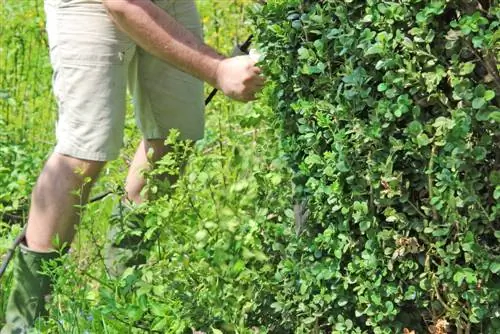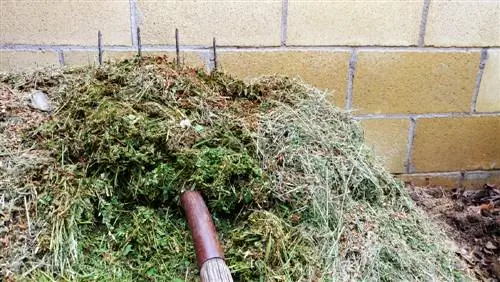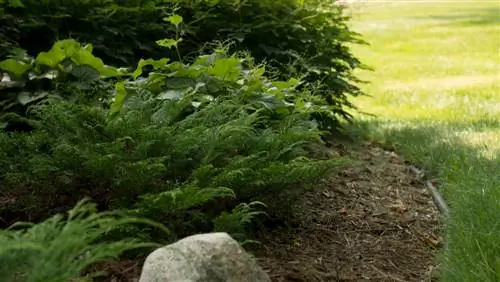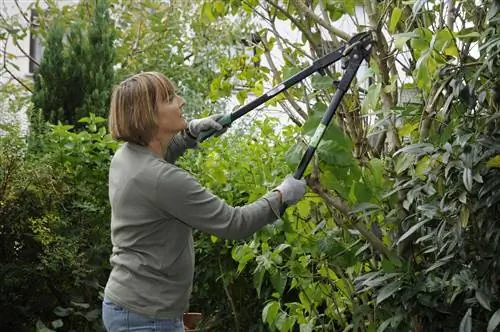- Author admin [email protected].
- Public 2023-12-16 16:46.
- Last modified 2025-01-23 11:21.
For several years now, the box tree moth, which was introduced from East Asia, has been destroying large areas of valuable box tree stands in numerous gardens and cemeteries. The voracious pest is difficult to get rid of, so in many cases the only option is to tear out and dispose of the infected boxwood. However, the contaminated and highly contagious clippings should under no circumstances be allowed in your own compost or in the recycling center. So where to put the waste?
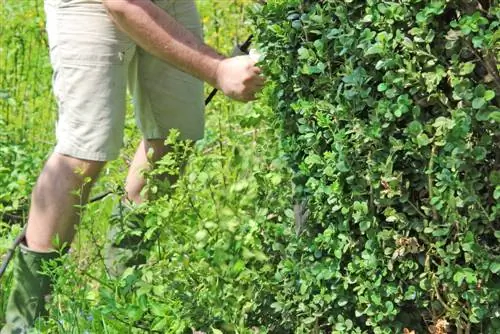
How should I dispose of boxwood clippings?
Boxwood waste can be disposed of in the compost if the plants are he althy. However, in the case of diseases or pests such as the box tree borer, it is better to dispose of the clippings in the residual waste or organic waste bin or dispose of them by incineration or at a recycling center.
Where do the clippings go?
As long as the boxwood is he althy and not affected by fungal or bacterial diseases or pests such as the boxwood borer, you can easily chop it up and dispose of it in the compost heap, well mixed with lawn clippings and, if necessary, a compost accelerator. In this form, the clippings are also very suitable as mulching material for ornamental and crop beds.
What to do if diseased boxwood needs to be disposed of?
However, if the box is affected by wilt or the dreaded shoot death, or has perhaps even been eaten bare by the box tree borer, you must under no circumstances compost it or mulch other beds with the material. Pests and pathogens sometimes survive for years, only to strike again in the following years. The caterpillars of the borer, for example, overwinter protected inside the boxwood, while fungal spores survive for a very long time even under the most adverse conditions. So if you need to get rid of contaminated cuttings, it's best to dispose of them
- about household waste (residual waste bin)
- about organic waste (organic waste bin or brown bin)
- in appropriately designated containers at the recycling center (ask in advance!)
- or at a campfire (obtain prior permission from the authorities!)
If the boxwood is to be disposed of in the trash, it is best to pack it airtight in a bag or something similar. In this way, the pathogens that cause the disease cannot escape and possibly spread further.
Why can I throw the clippings into the organic waste bin but not compost them myself?
Now we advise you not to compost the box infested with the box tree borer, but to dispose of it in the organic waste bin. Their contents also end up in the compost, even if it is of industrial size. What's the difference? Can't the borer spread further here? No, because industrially operated composting plants heat the compost material to temperatures of more than 55 °C for a period of several weeks. The borer does not survive this treatment in all its developmental stages, which is why disposal is unproblematic. On the home compost, however, the temperature development and hygiene cannot be monitored nearly as closely, so that the animals can survive and continue to reproduce.
Tip
Effectively combating the boxwood borer is a difficult matter, especially since it keeps coming back after periods of recovery. If the infestation is severe, it may make sense to avoid cultivating boxwood altogether and instead select similar plants as a replacement.

